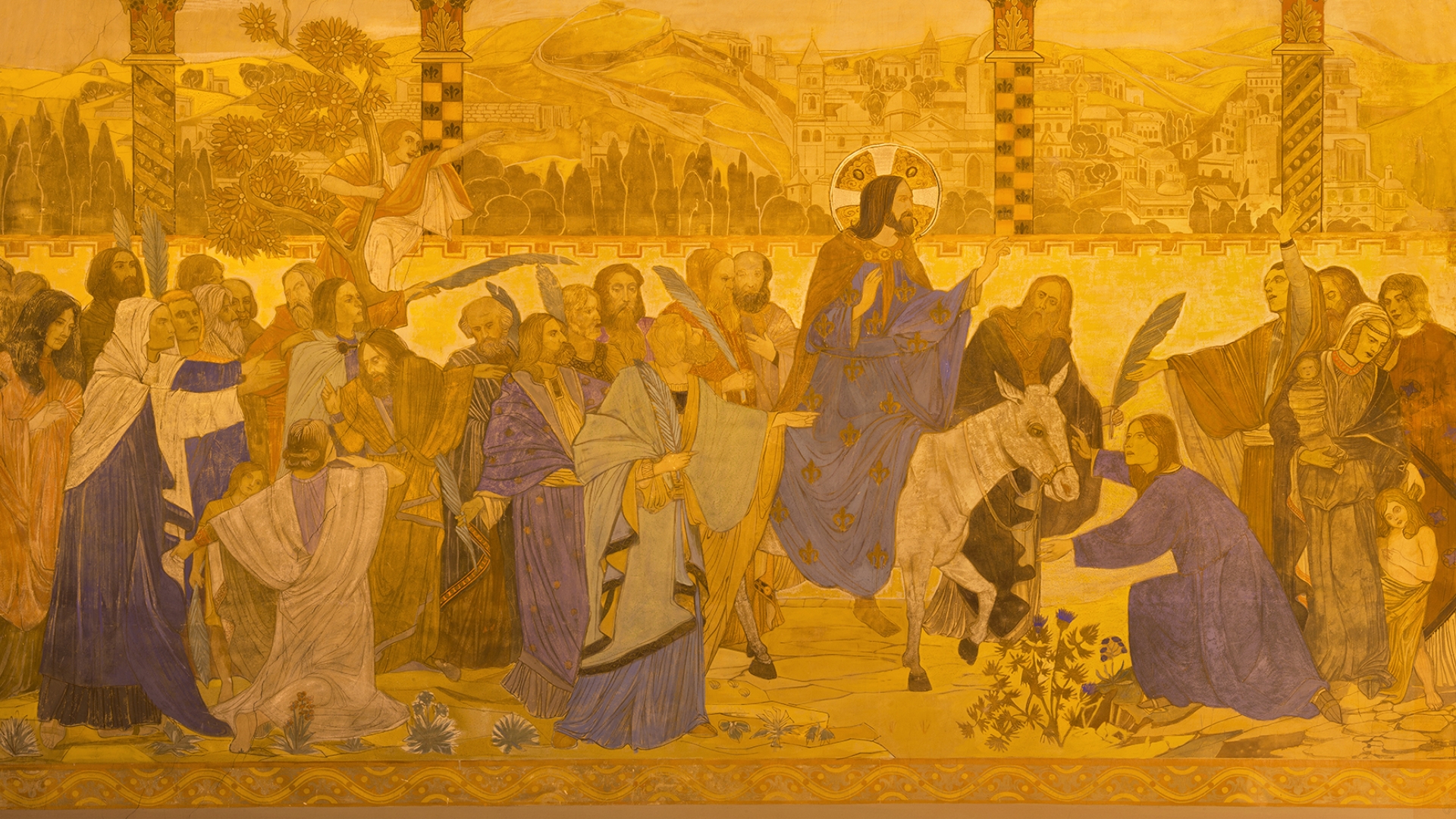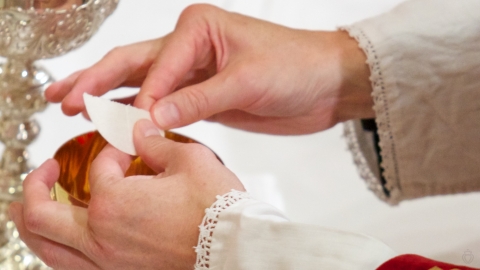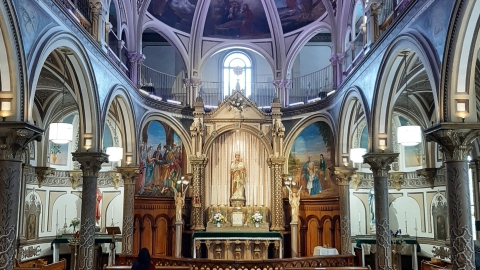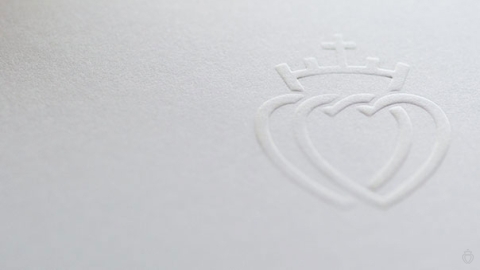A Study of Passiontide: Doctrine, History, and Liturgy

As we arrive closer to the solemn weeks of Passiontide, we present here a study in three sections on Passion Week, Holy Week, and the Sacred Triduum.
Doctrinal Note
The hatred of Christ's enemies grows day by day. It is about to break out and on Good Friday, we shall be reminded of the most frightful of all crimes, the bloody drama of Calvary, foretold by the prophets and Our Lord Himself. The liturgy, too, takes into account both the Old and the New Testaments, working out a striking parallel between the teaching of St. Paul and the Evangelists about Our Lord's Passion and the clear prophecies of Jeremias, Isaias, David, Jonas, and Daniel.
As the fatal end approaches, the Church's accents of grief become more pronounced. The thunderbolt of Divine Justice is about to strike the Redeemer who has become man for love of His Father and for us. By reason of the mysterious solidarity existing between all the members of the great human family, He offers Himself as a substitute for His guilty bretheren. As the prophet says, "He clothes Himself with our sins as with a garment," and He was "made sin for us" that He might bear our sins in His body upon the tree and destroy it by His death. In the Garden of Gethesemane, the sins of every age and of all mankind flowed horrible and repulsive into the most pure soul of Jesus. Further, His Father doing violence to the love He bore Him is to treat Him as a being accursed, according to the Scripture: "Cursed is He that hangeth on a tree."
For the "work of our redemption required" that Our Lord should be set as the salvation of the world upon the cross, so that "whence came death, thence might life be restored, and that he who overcame by a tree might also on a tree be overcome." The struggle between the Prince of life and that of death is unequal; but Christ triumphs by an act of self-sacrifice. As early as Palm Sunday, He advances wtih all the certainty of a conqueror to be greeted wtih acclamations, crowned with palms and laurels, "tokens of the victory He is about to gain."
Jesus enters His capital Jerusalem, and mounts the costly throne which His Blood "adorns with royal purple" over which Jews and Romans write in the three principal languages of the time, "Jesus of Nazareth, the King of the Jews." David's prophecy is accomplished; God is reigning from the tree, which from being an object of shame becomes a "standard of a King," and our "only hope" on this "holy Passion day."
"We adore Thy Cross, O Lord ... for behold, by the wood of the Cross, joy came into the whole world." It was to show clearly how, from this point of view, that in days gone by, Christian artists changed His crown of thorns into one, heraldic and royal.
It was during the old Paschal triduum when the Church makes remembrance of the death and triumph of Christ, that the ancient councils required that the sacraments of Baptism, Confirmation and the Eucharist should be given to the catechumens and that public penitents should be reconciled by sacramental absolution. In a sense, these catechumens were "buried together" with Christ by baptism into death and rose with Him into newness of life. So did Easter, and so does also Passiontide, by marking for all Christians the anniversary of the reception of those blessings, remind them that Our Lord's Passion and Resurrection were at once the efficient cause and the pattern of their own, and help them as the years pass, to share in these sacred mysteries in an ever more full and intimate way.
These feasts were not, then, a mere commemoration, concerned only with Our Lord Himself; they became a reality for His whole mystical body. The conflict of Calvary extended to the whole world, where with Christ her Head, the Church gained a new victory over Satan every year at the Easter Feast.
The purpose of Passiontide through its close connection with Easter, is to recall to our minds our own Baptism, when our souls were washed in the Blodd of Our Lord, and our First Communion when they drank of its healing stream. Easter, Communion, and Confession are survivals of the ancient discipline connected with Baptism and Penance; they lead us to die and rise again with Christ during this liturgical season.

The Holy Land during the time of Our Lord's public life
Historical Note
While the purpose of Passiontide is to call to our minds the persecutions of which Our Lord was the object during His public life, it is more concerned with the last year of His ministry, during which His enemies' hatred increased daily, revealing itself in more tangible form and culminating in the drama of Holy Week, when the Church day by day follows the footsteps of her Lord.
The Second Year: After having restored to life the son of the widow of Naïm, Our Lord absolves Mary Magdalen, the woman who was a sinner but who did not fear to come and throw herself at His feet while He reclined at the table of Simon the Pharisee. Judas' avarice foreshadows his crime.
The Third Year: After the Transfiguration, Jesus returns to Capharnaum, immediately afterwards making the pilgrimage to Jerusalem for the Feast of Tabernacles. He proclaims Himself the Fountain of living water, refreshing the souls of men and foretells His approaching death. When the festivities are over He gives proofs of His Divinity to the Jews who in consequence try to stone Him. He returns to Galilee but again visits Jerusalem in the winter for the Feast of the Dedication. The Jews again wished to stone Him, for is not He a blasphemer who claims to be one with the Father in heaven?
Subsequently, going into Perea, Our Lord is called from thence to Bethany, where He raises Lazarus from the dead; a miracle which wins Him such renown that the Jews, no longer able to contained their jealousy, definitely decide upon His death. Our Lord, therefore, takes refuge at Ephrem, returning six days before the Passover to Bethany where, "for His burial," Mary, Lazarus' sister, pours a precious ountment over His feet.
The Great Week: The next day, Jesus makes his triumphant entry into Jerusalem. The same evening, He leaves the city, returning the following day (Monday) when He receives some Gentiles in the Temple. On Wednesday evening He sets out in the direction of the Mount of Olives, predicting to His disciples His Passion, now close at hand. He does not return to Jerusalem until Thursday evening, for the Last Supper. Cricified the next day on Calvary at the city gates, He is buried the same day in the sepulchre whence He rises triumphantly on Sunday morning.
Liturgical Note
At the time when the 40 days of Lent were counted from Quardagesima Sunday to Maundy Thursday, the three days going from Thursday evening to the Sunday constituted the "Paschal Triduum," the Feast of the Redemption, with both its sorrowful and glorious aspects. When the Friday and Saturday, down to the beginning of the Paschal night, were joined to Lent to have 40 days of fasting, the celebration of Jesus' Passion came to be considered also as part of Lent. Furthermore, the bodily sufferings of Christ were recalled not only on their anniversary day, but already read in the four Gospels to start with Palm Sunday. And yet from the fifth Sunday of Lent, the anguish of Jesus' Heart found an expression in numerous prophetical quotations, and the glory of the Cross is foreshadowed in the Hymns: hence the names of "Passion Sunday" and of "Passiontide," which mean an anticipated development of the Easter drama's first act.
The ceremonies of the last week, called Great or Holy Week, originated in Jerusalem. There with the Holy Gospels in hand, the Christians would follow their Redeemer step by step, piously gathering on the very spot precious souveniers of the most solemn among all events, that whcih marked the close of His mortal life.
These ceremonies, at first of a local character, were introduced into the liturgy at Rome, where the very churches were planned in such a manner as to make it possible to carry out the offices of Holy Week in the way that had been customary at Jerusalem. The last three days are called the Sacred Triduum. During this fortnight, the Church suppresses the psalm Judica Me and in several instances, the Gloria Patri also, since these had no place in the ancient Liturgy. Moreover, she veils all pictures and statues.
Regarding this, it is evident that devotion to the Saints ought to yield to the great work of Redemption. However, even the crucifix is veiled. This is a trace of the formerly prevalent custom of hanging a veil between the sancruary and the nave during the whole of Lent. In those times public penitents who had been excluded from the Church could not enter it again until Holy Thursday, and when the custom was abolished, all Christians were more or less placed in the position of such penitents. Although no sentence of exclusion was pronounced against them, the sanctuary and all that took place there was hidden from them, to show them they could only merit to share in the worship of the Eucharist by their Easter Communuin, after they had accomplished works worthy to be considered penance.
Finally, by stripping the altars and silencing organs and bells from the Gloria of Maundy Thursday to that of Holy Saturday, the Church gives expression to the grief which she feels over the death of her divine Spouse.
Dom Gaspar Lefebvre, OSB - sspx.org - 04/02/2019



